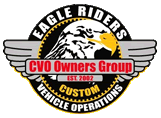in the picture the bearing on the left is a caged roller - it will tolerate angularity - but if the cage goes bad it can drop rollers right out. the bearing on the right is a full needle bearing the needles stay in alignment just by being packed in - they wont tolerate any angularity, if the shaft is not straight they will wear and lock up. in this case i suspect the issue is load - the needle can tolerate more load by having more rollers - but the load per roller is slightly less because they dont have a cage - my old mcgill book says the needle is about 1.5 times more capacity at the expense of less tolerance for alignment.
most transmission bearings are needle and as long as the case stays straight they are good for a very long time. in the early 90's ford pickup transmissions would crap out - it turned out that the 7.3 engine would twist the case under a heavy load - that blew the bearings right out and quick - once they fixed the case the transmission problems mostly ended.
somebody in engineering wants a caged roller in there - i just wonder what the reason is - in the bearing book caged rollers cost more. [but its a old book i admit]
I believe that timo nailed it.

The change from the full complement cam needle bearing to the caged INA bearing came around 1991, and the issue was alignment.
The camshaft is supported by a bearing in the crankcase and a bushing in the gearcase cover. Since the crankcase and gearcase cover are produced in separate manufacturing processes, the relative location of the bearing and bushing centers is subject to production variance within a defined tolerance; they will never be perfectly aligned. In some cases they may not even be well aligned.
In the late ‘80’s there were numerous cases of camshafts thrusting to such an extent that the thrust shoulder of the bushing in the gearcase cover was worn completely off. This was evident by the metal filings behind the “points cover” as a result of the timer cup cutting a deep groove in the timer sensor plate.
The early Big Twin and Sportster transmissions ran loose roller bearings, where this style bearing was used, but you don’t see that at all anymore. As timo stated, the caged needle bearing is much more tolerant of misalignment than the loose roller bearing.
The load capacity of the loose roller bearing is greater than the caged bearing, but the tradeoff is the friction generated by the rollers misalignment. In 2006-07, the diameter of this bearing in the Twin Cam crankcase was increased, increasing its load capacity.
It seems to me that if you have an application that increases the load on this bearing, it would be appropriate to run a loose roller bearing.
as always, just my opinion
 Author
Topic: INA Bearings (Read 4683 times)
Author
Topic: INA Bearings (Read 4683 times)

